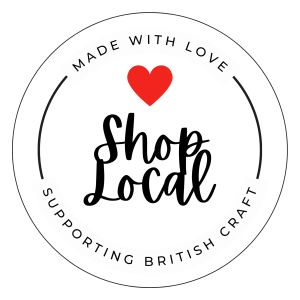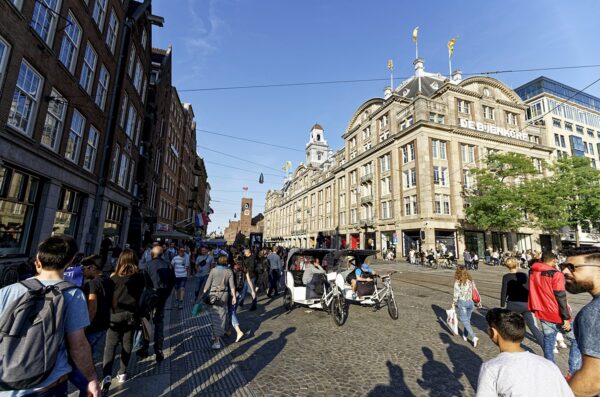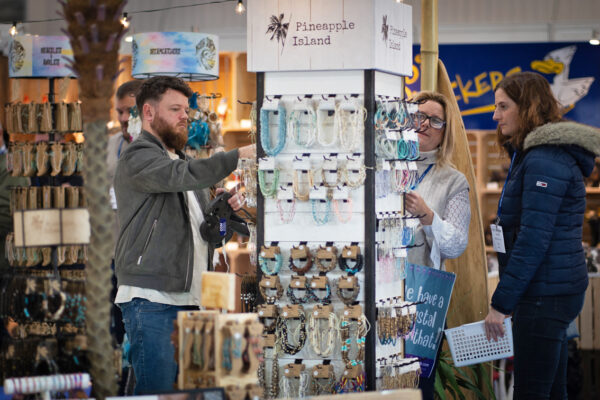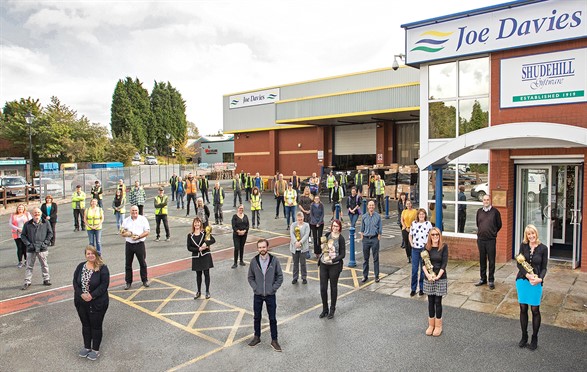 How was it for you? I’m talking about Christmas trading.
How was it for you? I’m talking about Christmas trading.
Earlier this week, if newspaper headlines were to be believed, retailers had suffered a pretty torrid time in the run-up to the end of the year – and things hadn’t got any better going into 2017.
Then, on Tuesday January 10, the British Retail Consortium and KPMG rode in like knights on white chargers with new statistics. Christmas had been saved. Hurrah!
They said that UK retail sales rose by 1% on a like-for-like basis from December 2015. Shoppers held out for the Christmas week, which saw sales up around 40% compared with the other weeks of the month.
Food sales were the major contributor to total growth, while non-food sales were “sluggish” overall, despite a strong performance by categories driven by gifting items. But hang on a moment. If you’re a small, independent gift and home or card retailer, are they really talking about retailers like you?
When it comes to surveys and retail intelligence, the little shops don’t get much of a look-in. Polling methodology tends to cover the bigger players who belong to organisations such as the CBI and BRC. Fair enough. Most small trade associations don’t have the money or resources for research to give them meaningful feedback.
From what I’ve heard, it was the usual Christmas story: some of you didn’t do so well, and others will testify that while business may not have been brilliant over the festive period it was better than expected.
Retail research? ‘You pays your money and takes your choice,’ as the saying goes. In the end, what you get is a snapshot. If you’re the owner of an independent shop who managed to enjoy strong Christmas sales, then a big ‘well done’. I suspect there are quite a few like you up and down the country!
 What was the secret of your success?
What was the secret of your success?
Unlike many big retailers you may have resisted the temptation to start discounting early – if at all – and didn’t get involved with Black Friday and Cyber Monday events. And you were, no doubt, able to be flexible, buy in small quantities and re-order as soon as you saw a product’s sell-through potential. And even though yours is a bricks and mortar store, I wouldn’t be surprised if you have an online presence.
It’s also likely that you visited one of the autumn trade shows for top-up buying – and to find products that were on-trend. Yes, discovering what’s fashionable isn’t the prerogative of large stores: even gift shops in villages can do it if they’re prepared to put in the leg-work!
The people at retail intelligence firm Springboard suggest that in 2016 footfall was both a reflection and magnification of the trend of a modest bounce back of the high street, alongside a slowing of growth out of town and a downward slide in shopping centre activity.
Shoppers’ requirements from bricks and mortar retail destinations are apparently moving away from purely transactional based trips to those that focus on offering a more rounded leisure experience. Springboard anticipates that consumers will continue to be cautious in their spending at the beginning of 2017.
David Smith wrote in The Times that he expected households to “take a bit of a breather” this year because of higher inflation and a softening of the employment market. He suggested that spending would not fall but grow more slowly.
 Faced with the inexorable rise in online shopping, increased staff costs, the burden of business rates and the very real prospect of having to put up their prices because of sterling’s depreciation, retailers will be hoping that Smith is correct when he says: “As always, you write off the British consumer at your peril.”
Faced with the inexorable rise in online shopping, increased staff costs, the burden of business rates and the very real prospect of having to put up their prices because of sterling’s depreciation, retailers will be hoping that Smith is correct when he says: “As always, you write off the British consumer at your peril.”
Well, confidence hasn’t yet been dented – and the doomsayers are once again confounded. Long may that continue.
Meanwhile, Mintel says that this year growing consumer confidence in contactless payment systems will lead to a greater number of businesses embracing digital payments and more impulse purchases thanks to the financial fluidity they offer.
Its research reveals that 30% of UK consumers already feel comfortable about the potential for a completely cashless society, while 29% say that it is more convenient to pay for things using a smartphone than other payment methods.
That said, currencies have been in the news – from rare plastic fivers to the Bitcoin. I confess that I still can’t get my head around the way this so-called crypto-currency really works.
But it was the best-performing currency of 2016, rising by more than 80%. Five years ago Bitcoin traded at just $3.91. At the time of writing it stands at $911.65. Existing only on computers, it has no central bank support. Remarkable.
There will soon be a new UK quid on the block. The 12-sided £1, “the most secure coin in the world”, will enter circulation in March alongside the old round pound, which will cease to be legal tender on October 15. There are implications if you have a shop and you can find out more by going to www.thenewpoundcoin.com
May the retail gods be with you.
Email Alan: ajmonahan@aol.com
















